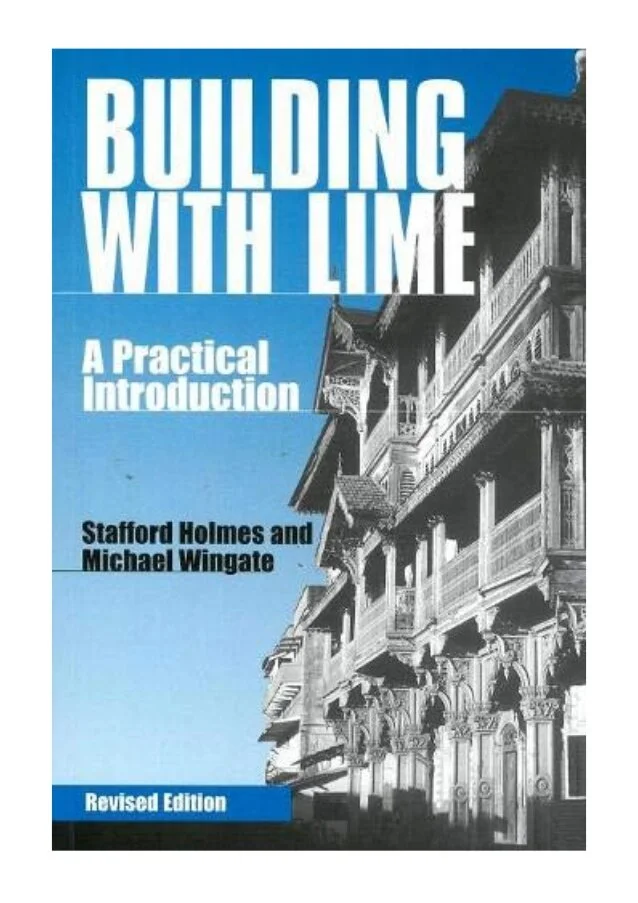Lime Plaster Selection
Lime is an ancient material that has been used on walls for thousands of years. Typically made up of crushed limestone that has been heated in a kiln to 900 °C and then introduced with sufficient water, these processes work together to make a hydrated lime. With careful attention to packaging and storage, lime plaster serves as a widely accessible material around the world.
Lime Plaster is simply lime, in either putty or dry powder form mixed with an aggregate such a mason sand and sufficient water to make into a slurry. This is applied in a wet finish to walls, floors, and ceilings. As the lime plaster begins to dry out and cure, the lime in the plaster slowly absorbs carbon dioxide, a process that recreates limestone.
This process of harvesting limestone, producing lime, and allowing the re-carbonization of the lime into limestone is called the Lime Cycle.
Once Understood, lime is a soft and forgiving material which amply rewards care and patience in its use and produces work with great aesthetic quality - Stafford Holmes
Limestone deposits are rarely pure; additional minerals create Limes that vary in physical and performance characteristics.
Simple, yet varied.
Within the boundaries of lime is a surprisingly complex and varied material, depending on the constituent elements of the material. Many limestone deposits have other minerals in addition to pure calcium carbonate, or lime. These additional minerals affect the properties resulting from limestone production. These variations in lime can be used to good effect, depending on your needs as a builder or designer.
In the US and Canada, Pure Limes dominate, though the term Pure Lime is a bit of misnomer. In the US, these limes are generally referred to as Hydrated Limes.
The differences between high calcium, magnesium, and dolomitic limestone are shown below, as determined by ASTM. The distinguishing characteristic is the percentage of Magnesium Carbonate in the limestone.
Dolomitic limestone is quite common. Produced into Type S lime, it’s seen as a valuable material in the plastering and mortar markets, so is easy to find at mason supply shops and building supply stores. High calcium lime is less abundant but can also be found, and is highly prized among many plasterers.
Hydraulic Limes are manufactured in North America, but do not naturally occur. Throughout western Europe but especially in France, Naturally occurring Hydraulic limes are harvested for use in hempcrete and lime plaster. The nature of Hydraulic lime allows it to set with water. This quick set allows additional hempcrete to be placed on a wall without scheduling delays. Used as a lime plaster, Hydraulic limes are useful to expedite the curing process on a wall.
For the Hempcrete House in Goshen, MA, we had 3 factors that dictated our choice of lime: large facades with significant exposure on the windward side, a wet and harsh climate, and an impending frost date.
For these reasons, we chose to install a NHL 3.5 hydraulic lime plaster. This lime was imported from France, and will cure more quickly, be harder on the wall, and have more resistance to erosion.
Exposed facades, like the one shown here are common throughout New England, provide little protection from wind, rain, snow, hail, and sun. This combination is hard on all finish surfaces, and plaster is no exception. Proper detailing, especially around bulk wetting - rain drops, drip edges, and capillary wetting - is essential for the life of any finish. In cases such as this where overhangs are shallow and buildings are tall, a little extra protection goes a long way. By shifting from a hydrated lime to a hydraulic lime, we are able to take advantage of increased hardness. Given our latitude, the decreased setting time and curing time was also a bonus. Due to Covid-19, plastering came 2 months later than we’d planned. The shortened set and cure time of the hydraulic lime plaster allowed us to apply two coats before the temperatures dropped below freezing.
NHL 3.5 Lime used on the exterior façade of this home in Goshen, MA.
For the interior, we chose a local lime from Lee, MA. Sold as two different products - a double hydrate agricultural lime and a Type S building lime, this dolomitic lime product is suitable for lime plaster. Unfortunately, its no longer available on the market, but that’s another story.
Of all the hydrated limes, the dolomitic lime meeting the ASTM standard of Type S is the most production-ready plaster in the US. This product is widely available, and is very affordable, especially in bulk. Type S lime benefits from being pre-wetted before application, but can be used directly from the bag, an impossible feat with high calcium. We recommend presoaking the lime for up to 16 hours prior for use in plasters. Hydrated limes are rich in texture, with a lush, buttery feel. Plastering with any hydrated lime can give the appearance of frosting a cake.
For an even richer plaster, try high calcium lime. You’ll need to be patient though, as high calcium lime needs to stay in putty for for at least 3 months prior to use. However, for plaster enthusiasts, the rich body and smooth application is worth the effort.
Want to take lime Further?
Building with Lime: a Practical Guide
Ned at The Natural Building Centre, Wales UK Email: post@thenaturalbuildingcentre.co.uk
Recommended Read:
Building with Lime: a Practical Guide by Holmes and Wingate. Considered the definitive guide to lime.
Recommended Watch:
Ned at the Natural Building Centre in North Wales, UK offers an easy to follow 26 part series on lime. Catalyst suggests starting with #3, Different Types of Lime.
Reach out to HempStone:
To learn more about how lime might be used on your project, get in touch. There’s really little Catalyst likes more than discussing lime.




